Q&A with Ambrose Tashobya - ''3x3 is growing in Africa''
ABIDJAN (Cote d'Ivoire) - In this interview, Ambrose Tashobya, the man on the frontline of the development of the 3x3 discipline in Africa, sheds light on the growth of the sport.
ABIDJAN (Cote d'Ivoire) - In this interview, Ambrose Tashobya, the man on the frontline of the development of the 3x3 discipline in Africa, sheds light on the growth of the sport.
Tashobya sat down with FIBA.basketball.
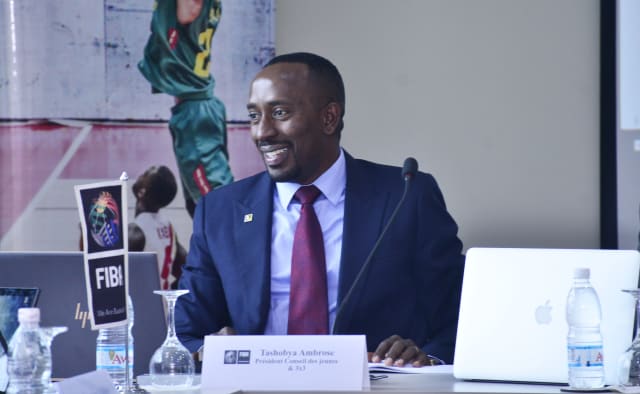
Former president of Uganda Basketball Federation. Now you are on a different position and mission. What’s your role?
I am a chair person of FIBA Africa 3x3 Council. I am also the vice-chairman of FIBA 3x3 Commission. My mission in FIBA Africa right now is to make sure that you play 3x3, and I play.
You are a former 5-on-5 player. How did you end up in 3x3?
Yes, most of us were 5-on-5 players. Before, there was no organised 3x3. Back in the day it was street-basketball. We didn't call it 3-on-3. Not long ago, FIBA decided it is was time to take this sport from the street all the way to the Olympics. It was like a dream. FIBA has managed to have that discipline of a group of friends playing in the backyard being able to play at the world stage. It's one of the most watched sports at the Olympics.
It all started in 2017 in Lome, Togo, where the sport became official. Can you give us a full picture of the 3-on-3 discipline in Africa right now?
The name is not 3-on-3, it's actually 3x3. Since Togo, I think, that's when we begin appreciating FIBA 3x3 more because we had a FIBA Africa Cup there.
I embraced 3x3 when I was the president of the Uganda Basketball Federation. At the time, I realised that for a player to develop skills it was easier to play 3x3. In 5-on-5 basketball, if a young boy is 6-foot-5 or 6-foot-6, people would say, you are a big man. Rebound the ball, pass it to the guard, go and post. In 3x3, you rebound the ball, you have 10 seconds. If you are a big man on the outside, you must get the ball, shoot or drive in, or pass it. It's going to force you to try and develop your skills, and it becomes exciting. That's how I knew this sport would be very exciting, and that's why I was pushing for it.
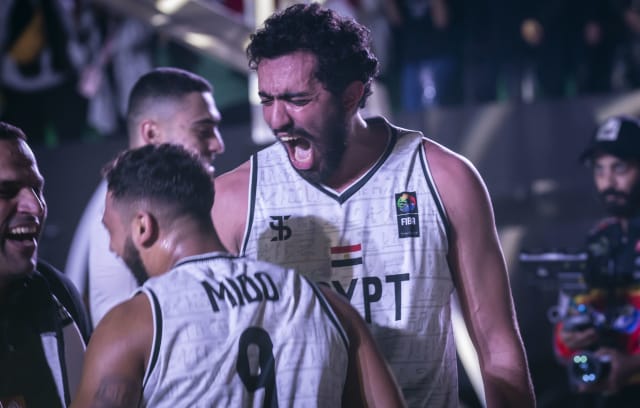
How much progress has been made for the growth of 3x3 in Africa?
We are doing everything that the rest of the world is doing. We are not at the level of Europe. They have been very successful because of the way it's interconnected; they have so many tournaments; through 3x3 they give points per tournament. Most of their countries are high in the FIBA rankings.
In Africa, the likes of Egypt, Uganda, Madagascar, Tunisia, they are highly ranked too. To be very clear about it, Egypt is among the top-20 countries and they managed to qualify for the FIBA OQT1 where they look at top-20 counties in the ranking.
3x3 has grown in Africa. Some countries have embraced it while some countries have stayed behind, especially some powerhouse in 5-on-5. It has taken them some time to think about it. This is a challenge for all us, as leaders in African basketball.
I remember the late Patrick Baumann was pushing for 3x3. Some countries thought maybe be this was not for them. Right now, the USA is one the most active countries in 3x3. They realised that they can go to the Olympics through 3x3. You can get a medal in 5-on-5 and another medal in 3x3. Some countries have realised that they were missing out.
So, there is still some work to be done in Africa 3x3.
We are not badly off, but we are not at where we want to be yet. We recently played the Africa Cup in Egypt last year to be able to try and qualify two teams for the OQT. We had Egypt (men) and Kenya (women) qualified.
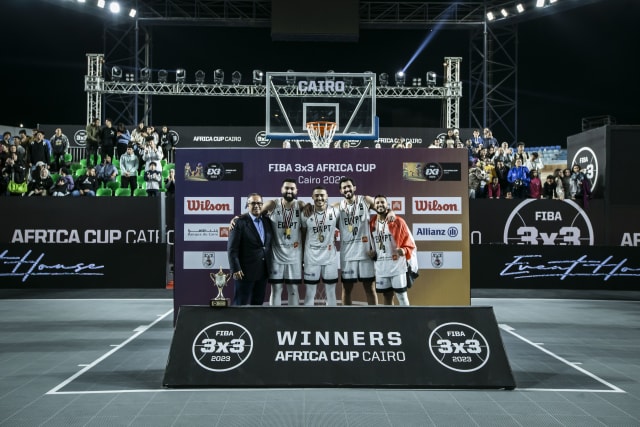
Does this mean that Egypt is the dominant force on the continent in 3x3?
For all intents, Egypt is the number one team in Africa. It's because they have invested in 3x3. It's because they have participated at different levels of the competition and they have been consistent. It's easy for any country to rise to the top. Madagascar won the Africa Cup. If we go back to the 2023 World Cup, do you know who beat France? Madagascar…. That’s the potential of Africa.
How many countries are officially playing 3x3 in Africa?
We have maybe over 35 countries playing the sport in Africa, and the ones that are playing 3x3 are putting it on the [FIBA] 3X3 official website. Some countries are playing the sport but they don't have a video coordinator to upload videos. but if we look at countries that are active, with coordinators, we have around 29 countries. But those that play consistently we are talking about 25 countries.
Is the sport expanding and growing in small countries because it's affordable to travel with 3 or 4 players and a coach?
When I was president of the Uganda federation, we were pushing for 5-on-5; we were improving. We were never known as a basketball country. It was always the francophone countries that were dominating the game, but then we started 3x3. We went to two U23 World Cups and U21 World Cups. When we came back from one the world cups, the sports council told me that they knew what we could do. "Now you're going to get money for basketball, they said. That is what 3x3 can do. If it's 5-on-5 you need 12 players.
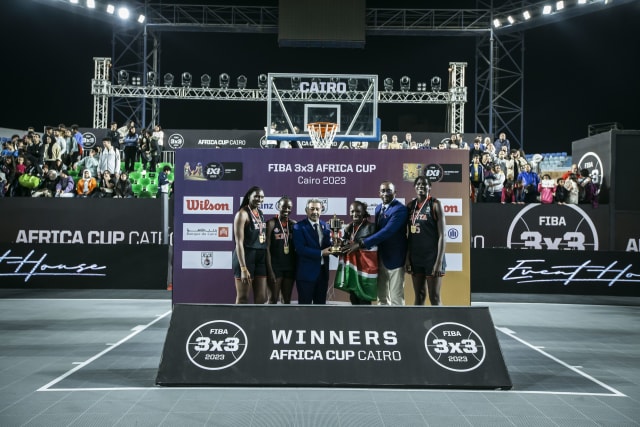
Can you talk about the specification and players' roles in the 3x3?
If you are too tall like a 7-foot-2, maybe that's not a sport for you as it requires a lot of agility, movement. Most top players stand from around 6-foot-2 to 6-foot-8. For the women, from 5-foot-7 to 6-foot-7. It means that small countries that don't have so much talent they can still get good talent and be able to compete at very high level.
Speaking in the growing popularity of 3x3 in Africa, we wanted to find out more about its program and schedule.
We are pushing for something called U23 National League. The way 3x3 tournaments are organised, they have a criteria of rankings from 1 to 10. If you organise a tournament of category 10 like a World Tour there is a point system which improve national rankings. If you play a tournament which are not in the high ranking you get very few points.
We don’t have a World Tour in Africa; We don’t have a Challenger mainly because of the cost of hosting a World Tour is very high, maybe around 2 million dollars.
What is the U23 National League?
The U23 National League is the most important tournament when it comes to developing 3x3. You have players who are U23, U21. They play over seven days. They play three days, rest one, play another 3 days, but you play a round robin-round system with a maxim of six teams in a tournament and a minimum of four teams.
Last year we had two leagues playing: one in Egypt and another in the DR Congo. This year we want to make sure that we have more leagues. from 2 to 3 leagues.
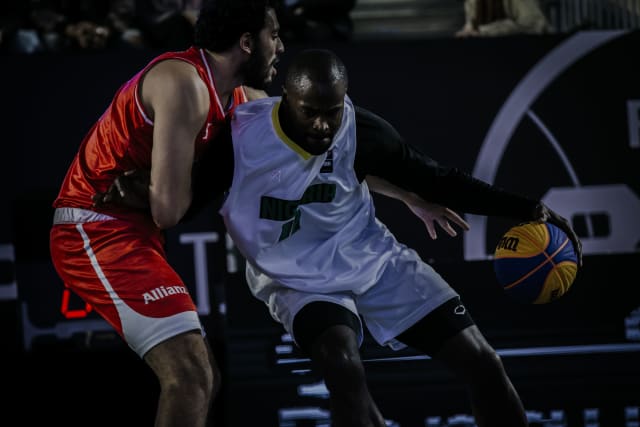
Can the U23 National League and the FIBA Africa Cup work hand-in-hand?
We are going to continue to play other mandatory tournaments, the Africa Cup. It's the equivalent to AfroBasket. We had one in Egypt, which was very well organised and we expect Madagascar to be hosting this year. We are yet to finalise the agreement.
How does the FIBA Africa Cup qualifying system work?
Countries must apply to play in the Africa Cup. The maximum number of teams we can accept is 20 countries. It usually takes place between November and December. The National League happens between June and August in the calendar of 3x3. This is special year because of the [2024] Olympic Games.
The Africa Cup is an annual event, but the one we had last year, the champions qualified for the OQT, that's why we had Kenya women qualify for one of the OQTs, and Egypt men for OQT2. These are the continental champions.
The next winners of the Africa Cup will just be crowned champions of Africa, and they win many ranking points. Africa Cup is ranked at category 8. It is a very high level competition.
What are the practicalities and benefits of playing these continental competitions?
If countries want to get ranking points, they should make sure they play U23 Nationals League; they must make sure they play the Africa Cup; They must make sure they play the U21 Nationals League.
The champions of U23 Nationals League will be fixed into a Challenger. They will be given invitations to professional leagues in America, Asia and Europe. When they invite you, it’s an all-expenses paid. The U23 National Leagues will also be able to play in the U23 World Cup. It's a great chance to grow.

What's the 3x3 level of African teams compared to other parts of the globe?
Frankly I expect Madagascar to go to the quarter-finals of the world cup. I have seen those players compete over time. I know what they can do. They are typical 3 on 3 players. Their level is high. They convinced everyone when they beat France. Rwanda and Egypt have played well at international level.
For those unfamiliar with the 3x3 basketball what's your message to them?
3x3 is a relentless game of ten minutes. It demands a lot from the athlete. You must be able to keep an high level of stamina. It favours tougher and resilience like African players. We can through ten minutes and fight until the end. I want to encourage all African countries to embrace 3x3. It's our chance to move to the top and, ultimately, your country can be a 3x3 champion.
What plans does your department have to keep developing 3x3 on the continent?
Recently, we brought an expat to run an elite camp to train around 10 coaches from 10 different countries, specifically the countries that will compete in the U23 Nationals League. The ten coaches that came were trained at very high level. We have also a number of camps that we have planned. During the U23 Nationals League we are going to be doing coaches and referees camps. On the development side we are training referees and coaches. 3x3 has a platform on the internet where you can become a coordinator
A lot has been said about the role of team coordinators. Can you break down their role and their impact to the sport?
Coordinators are the ones who will be allowed to organise tournaments. Candidates should go on the FIBA 3x3 website and select a course. It's free of charge. It takes approximately 3 days to learn how to organise a tournament in your country, your community. Once you competed the course, you receive a certificate. Then you can apply to organise events. But most of the work that we expect for 3 on 3 must be done by the national federations.
It looks as if some countries remain pessimistic about the popularity of 3x3.
Countries need to adopt 3x3 as a tool for players' skill development. We are looking at ways to integrate 3x3 on FIBA U16 competitions. They would be play 3x3 in the first two days of the tournament itself for a learning experience.
With the talent that some African countries like Cote d’Ivoire, Senegal, Nigeria and Angola, if they become serious with 3x3, I am sure they would eliminate most of these European teams that, sometimes, have beaten us.
FIBA